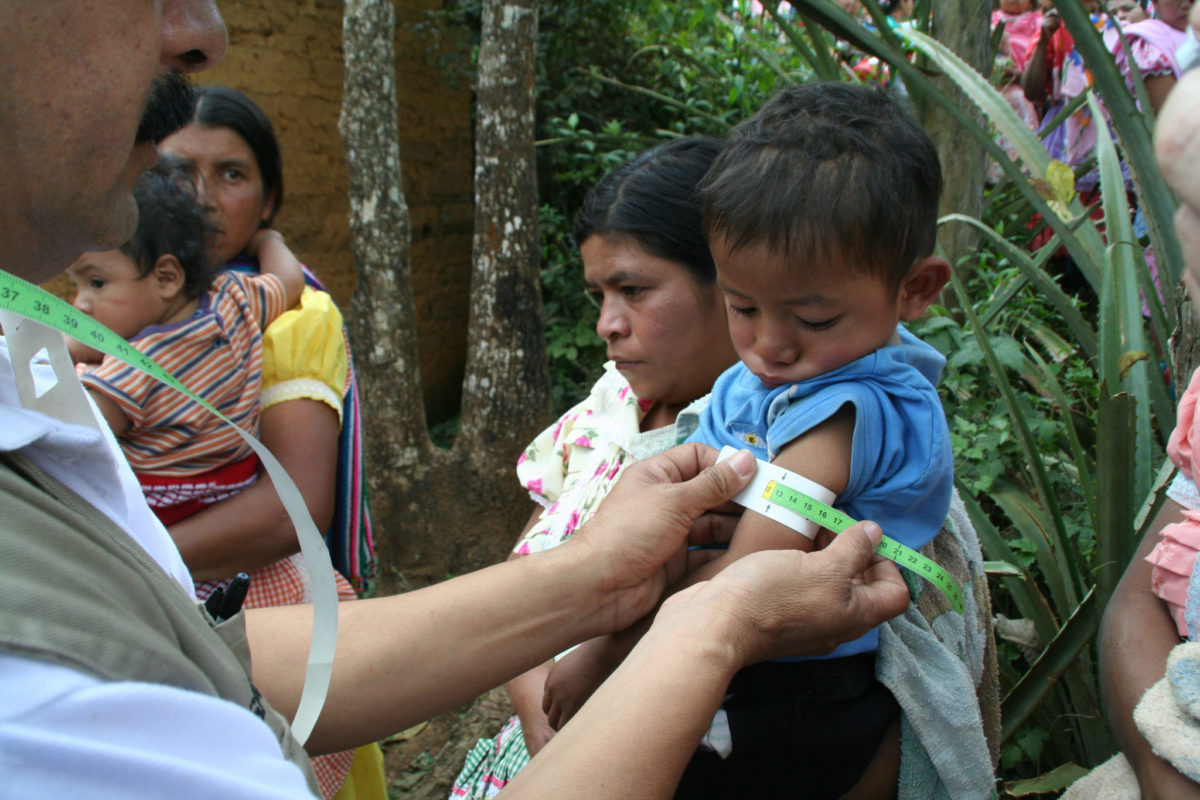5 Actions Governments Can Take to Help Children Suffering from Wasting

Every 11 seconds, a child dies from malnutrition. Over the course of a year, that means that more kids die from malnutrition than the population of Chicago. The COVID-19 pandemic is making these numbers worse. Wasting is the most deadly form of malnutrition, and experts estimate that pandemic-related disruptions are going to create 13.6 million additional cases of wasting by the end of 2022.
It doesn’t have to be this way. Governments can scale key nutrition interventions to stop this crisis from escalating further.
Not only is there already a suite of proven, cost-effective nutrition interventions ready to be scaled today, but researchers have also identified several promising new innovations to treat child wasting that help every dollar go further and save more children.
Kids who are already wasted need access to high-quality, reliable treatment in the form of ready-to-use therapeutic foods (RUTF). Today, less than 25% of even the most life-threatening cases get any form of treatment, leaving the majority of wasted children with little hope of a full recovery. We need to do better to deliver this treatment to more kids, especially in hard-to-reach communities where last-mile service delivery is particularly critical.
However, there is also a lot we can do to make sure vulnerable kids don’t become wasted in the first place. To start, we can give children regular doses of vitamin A, support breastfeeding mothers, and make sure all pregnant women have the prenatal vitamins they need to have healthy pregnancies. We know that implementing these proven nutrition interventions at scale will reduce malnutrition rates. These interventions also come with an incredibly high return on investment, with leading economists consistently ranking nutrition interventions as some of the most cost-effective ways to save and improve lives around the world.
Governments have a critical role to play in addressing the wasting crisis. Governments are the backbone of the nutrition sector, ensuring solutions to global malnutrition are available, sustainable, widespread and locally appropriate. At the December 7-8 Nutrition for Growth summit, governments have the opportunity to make SMART commitments to address wasting and avert the worst effects of the pandemic. One of the most immediate things governments can do to reduce wasting rates is come to the stage at the Nutrition for Growth summit with measurable, ambitious financial pledges to scale the nutrition interventions that we know work. But funding alone will not solve this problem. We need to take steps to make limited resources go further. Here are five actions they can take:
- Work with UNICEF and other UN agencies to fund and implement the country-specific roadmaps for the Global Action Plan (or GAP) on child wasting.
National governments have been key partners in developing robust Global Action Plan Country Roadmaps, and will be some of its primary implementers. In order to implement the GAP by 2030, governments around the world can set ambitious coverage targets for high-impact interventions and work with partners to execute their country’s roadmap and monitor their progress. - Participate in WHO and UNICEF’s Guideline Review for child wasting prevention and treatment.
WHO and UNICEF are currently reviewing and updating technical guidance on how to detect child wasting earlier and optimize the way it is treated. Once they have made recommendations at the global level, they will focus on reviewing and revising national guidelines to reflect global updates. Governments can pledge to work with UNICEF and the WHO to revise their own national guidelines in line with the updated recommendations. - Invest in innovative financing for wasting treatment
Governments can engage with emerging opportunities to leverage innovative financing mechanisms to mobilize domestic resources. One recent example is the UNICEF-managed Nutrition Match Fund, which matches domestically mobilized spending on RUTF. Innovative financing can also help prevent supply chain disruptions by offering short term loans to cover temporary cash flow problems (for example, the nutrition window in the Vaccine Independence Initiative (VII)). Governments can also make sure they give implementers flexible funding for their wasting programming. This is important across development, humanitarian and fragile contexts. This flexible funding will help implementers in constantly evolving situations to stay adaptable and quickly direct resources where they need them most. - Integrate wasting treatment services into existing health systems.
One of the best ways to reach more kids with sustainable wasting treatment programs is to integrate treatment services into existing government-run health systems. Results 4 Development and UNICEF have recently released a detailed resource guide on how to do this. By pledging to develop and implement an integration plan, governments can ensure these programs outlast the life cycle of a single grant or program. - Support ongoing research and innovation.
In the past few years we have seen incredible advances in how to treat wasted kids more effectively for less money, but these innovations are just the beginning. Ending preventable child deaths from wasting will require ongoing research toward projects like finding a cheaper way to produce RUTF. In many cases, this research will involve identifying and building solutions to context-specific determinants and drivers of child wasting.
Nutrition for Growth is a chance to stand on the world stage and commit to ending malnutrition and preventable child deaths. Action begets action, and so every pledge does more than just fulfill its specific commitments. Pledges inspire other actors to join the movement, and build the momentum necessary to reach our ambitious goals.
As author and journalist Roger Thurow said, “A [malnourished] child anywhere in our world becomes a [malnourished] child everywhere — we all share in the cost of lower education, reduced labor productivity, and escalating health care costs. And perhaps, the greatest costs remain immeasurable — a poem never written, a song never sung, a story never told, a technology never invented, a cure never discovered, a horizon never explored.”
We have the building blocks we need to prevent these absences. All we need now is the will to act.
